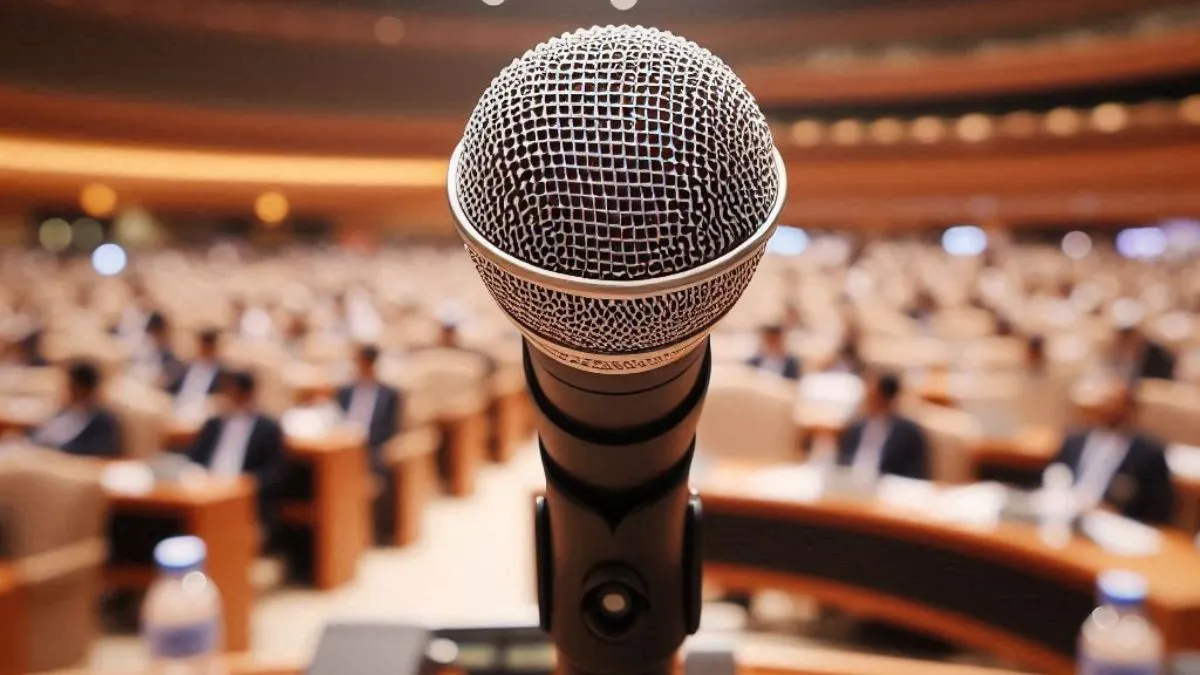General Knowledge Quiz About Public Speaking With Answers

When the teacher calls on a student to speak in public, their expression is as if the teacher had asked them to jump off a cliff. This is important for us to give you some quizzes about public speaking that help you enhance your understanding of public speaking to improve your skills and knowledge.
Each question comes with four answer options, and the correct answer is provided at the end of each question.
1. What is the main purpose of public speaking?
- A) To entertain
- B) To inform, persuade, or entertain
- C) To criticize
- D) To argue
Answer: B) To inform, persuade, or entertain
2. Which ancient civilization is often credited with the development of formal rhetoric?
- A) Roman
- B) Greek
- C) Egyptian
- D) Chinese
Answer: B) Greek
3. Who is Famous as the “Father of Public Speaking”?
- A) Aristotle
- B) Socrates
- C) Demosthenes
- D) Cicero
Answer: A) Aristotle
4. What is the term that is used for fear of public speaking?
- A) Claustrophobia
- B) Agoraphobia
- C) Glossophobia
- D) Xenophobia
Answer: C) Glossophobia
5. What is a key component of an effective public speaking delivery?
- A) Monotone voice
- B) Eye contact
- C) Reading directly from notes
- D) Speaking quickly
Answer: B) Eye contact
6. Which of the following is a common technique to manage public speaking anxiety?
- A) Ignoring the audience
- B) Practicing deep breathing
- C) Speaking without preparation
- D) Avoiding the topic
Answer: B) Practicing deep breathing
7. What is the term for a planned and rehearsed speech delivered without notes?
- A) Extemporaneous speech
- B) Impromptu speech
- C) Manuscript speech
- D) Memorized speech
Answer: D) Memorized speech
8. To Grab the attention of the audience and introduce the topic, which part is more important?
- A) Body
- B) Conclusion
- C) Introduction
- D) Transition
Answer: C) Introduction
9. What is the role of visual aid in public speaking?
- A) To distract the audience
- B) To enhance understanding and retention
- C) To replace the speaker
- D) To add humor
Answer: B) To enhance understanding and retention
10. What is the benefit of using storytelling in a speech?
- A) It confuses the audience
- B) It makes the speech longer
- C) It engages and connects with the audience
- D) It serves as filler content
Answer: C) It engages and connects with the audience
11. What is ethos in the context of public speaking?
- A) Logical appeal
- B) Emotional appeal
- C) Ethical appeal or credibility
- D) A type of speech delivery
Answer: C) Ethical appeal or credibility
12. Which of the following can help a speaker establish credibility?
- A) Sharing personal anecdotes
- B) Using complex jargon
- C) Speaking softly
- D) Avoiding eye contact
Answer: A) Sharing personal anecdotes
13. What does the term “audience analysis” refer to?
- A) Judging the audience’s Clothing
- B) Level of Audience knowledge and their understanding of interest.
- C) Testing the audience’s memory
- D) Recording the audience’s reactions
Answer: B) Level of Audience knowledge and their understanding of interest.
14. What is the importance of practicing a speech multiple times?
- A) To memorize every word exactly
- B) To reduce nervousness and improve delivery
- C) To increase anxiety
- D) To shorten the speech time
Answer: B) To reduce nervousness and improve delivery
15. What is the purpose of a speech conclusion?
- A) To introduce new topics
- B) Leave a lasting impression and summarize the most important key points.
- C) To provide detailed explanations
- D) To change the topic completely
Answer: B) Leave a lasting impression and summarize the most important key points.
16. Which of the following is an effective way to start a speech?
- A) With an apology
- B) With a question or interesting fact
- C) By reading from the script immediately
- D) With a long introduction about the speaker’s background
Answer: B) With a question or interesting fact
17. How can a speaker handle unexpected interruptions during a speech?
- A) Ignore them completely
- B) Become visibly frustrated
- C) Acknowledge them calmly and continue
- D) Leave the stage immediately
Answer: C) Acknowledge them calmly and continue
18. What is a persuasive speech designed to do?
- A) Inform the audience
- B) Entertain the audience
- C) Change the audience’s beliefs or actions
- D) Describe an object
Answer: C) Change the audience’s beliefs or actions
19. What should a speaker avoid when using humor in a speech?
- A) Making jokes about the audience
- B) Using personal stories
- C) Using light-hearted anecdotes
- D) Smiling
Answer: A) Making jokes about the audience
20. Why is it important to know the audience’s background and expectations?
- A) To choose the right attire
- B) To tailor the speech content and style appropriately
- C) To decide the length of the speech
- D) To determine the room temperature
Answer: B) To tailor the speech content and style appropriately
Recommended Posts:
